Throughout 2021, the Siekopai Nation achieved the first important advances in its persistent struggle for the reunification of its territory. For this Amazonian nationality settled in communities in Ecuador and Peru, its ancestral territory is the space for ethnic, social, and cultural reproduction; therefore, its protection and defense are a strategy to guarantee the life, future, and survival of the Siekopai.
In Ecuador, the population census of the Siekopai Nation is only 723 people, so strategies to defend the territory are crucial in order not to disappear after surviving decades of territorial dispossession, family separation, and cultural and physical extermination caused by the intrusion of evangelization, rubber exploitation, the border war between Ecuador and Peru, colonization and now, the lack of legal recognition of the territories. For this reason, we give an overview of the three main fronts of the Siekopai struggle, their first victories, and the processes currently underway.
Kokaya: putting a stop to colonization
Justino Piaguaje, leader of the Siekopai Nation territories, remembers when his grandparents “walked for weeks to the boundary, they arrived beaten, they had to sleep in the mountains, they suffered a lot to stop the colonization that was coming at that time.” One of these territories that Justino’s ancestors traveled through is that of the community of San Pablo de Katësiaya, known as “Kokaya,” of which the Siekopai Nation obtained the formal adjudication of 191 hectares in 1990.
Fourteen years ago, in that 191-hectare space, a group of settlers invaded this ancestral territory, starting a process of occupation, deforestation, hunting, fishing, and agricultural use of the area. These activities, which were identified and documented thanks to community monitoring work, seriously affected the ancestral heritage of the nationality and the forest that had remained protected for hundreds of years.
This situation generated deep concern among the Siekopai. Justino explains that the Kokaya territory is the gateway to other larger territories, so the advance of colonization had to be stopped right here. On several occasions, the Indigenous nationality demanded the departure of the invaders and reported the damage to the ancestral territory to the state authorities, without them doing anything about it.
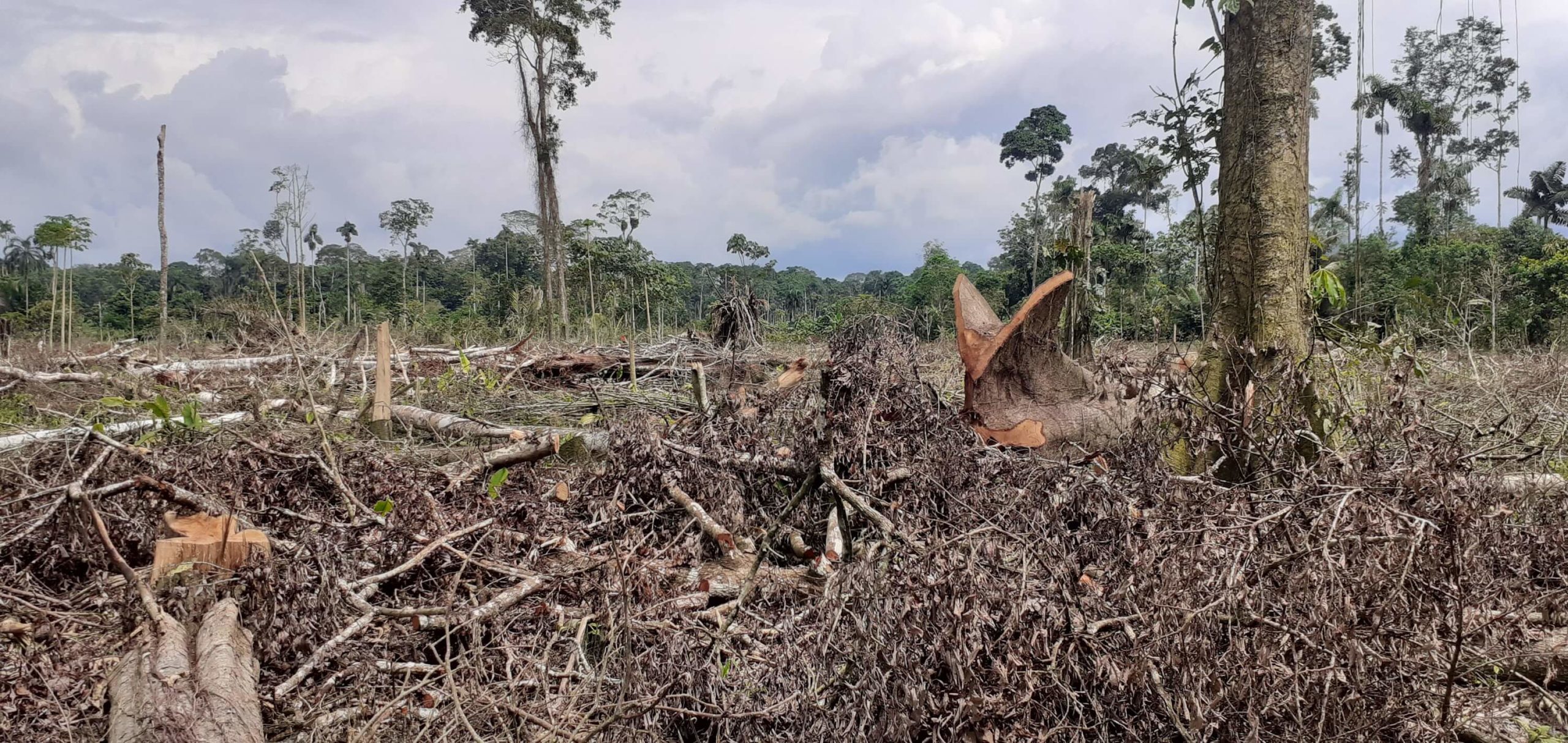
Deforestation recorded in the Kokaya area. Around 20 hectares of territory were affected. Photo: Luke Weiss.
In 2015, the Siekopai Nation began a legal battle that went through three different judicial bodies over six years, demanding that justice be done, that their rights be respected, and that the invaders be forced to vacate their ancestral territory. During this time, the nationality had to put up with unjustified delays in the justice system. Even despite obtaining several favorable rulings, since 2019, the invaders extended their occupation of ancestral territory and the damage to it without any state institution acting to evict the invaders, including the Ministry of the Environment, the Ministry of Agriculture, and the Ministry of the Government, who were aware of and verified the environmental damage and the illegal occupation of the territory, becoming accomplices in this situation.
Faced with state ineffectiveness, the Siekopai Nation decided in its Assembly space to evict the invaders, thus exercising its rights to self-determination and self-government and its powers for the administration, management, and protection of its territory. To do this, they established a procedure, notified the invaders of the action, and gave them a time limit to abandon the ancestral territory. Thus, once the deadline had elapsed, on July 7, 2021, the Siekopai nationality, in a historical journey of union and gathering that brought together more than 50% of the entire nationality, proceeded to peacefully evict the invaders who had usurped their lands since 2015.
Later, on August 23, 2021, they traveled 350 kilometers from their territory to the city of Quito to demand the definitive resolution of the legal process so that the invaders who were in the ancestral territory before 2015 were evicted. One hundred and fifty people from the Siekopai Nation: authorities, men, women, youth, boys, and girls mobilized to the outskirts of the National Court – the last instance of the case – in the first mobilization of this kind carried out by the Siekopai.
Seven days after this mobilization, the National Court finally resolved the pending judicial process, confirming that the Siekopai Nation is the ancestral owner of this territory and that the invaders should be evicted. The Court rejected the cassation appeal filed by the invaders. Therefore, they ratified the first and second rulings that recognized the territorial rights of the Siekopai Nation.
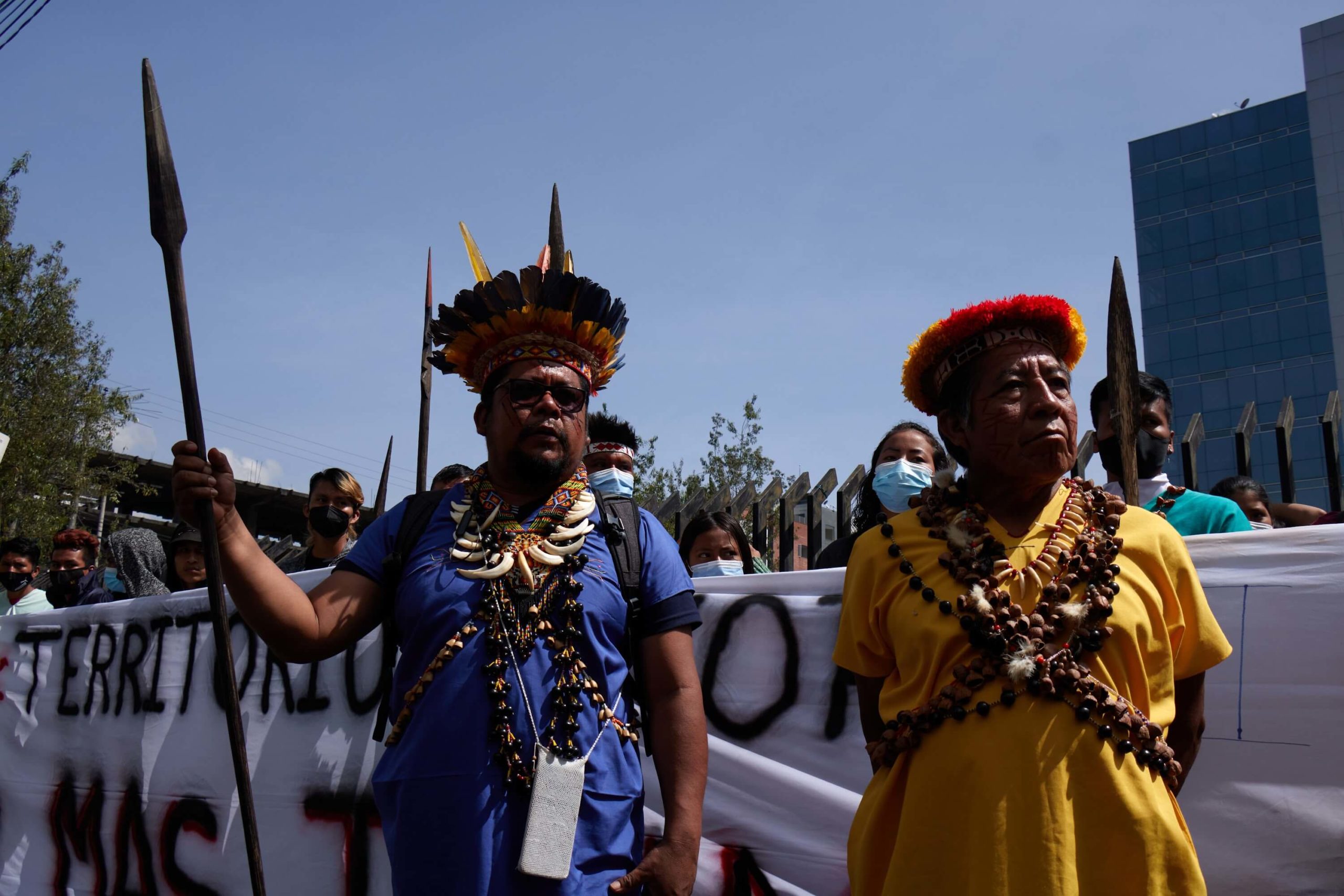
Sit-in in front of the National Court of Justice in Quito, Ecuador. August 30, 2021. Photo: Ribaldo Piaguaje.
Currently, the Siekopai Nation continues to press the authorities for the definitive liberation of the territory. They continue to monitor the territory in search of poachers and have begun the reforestation of affected areas. This victory is very significant for the Siekopai and their collective territories.
“This victory has filled us with dignity, self-esteem, that only with unity can great struggles be made, you can resist, and with time you can at least achieve justice. That, for us, means Kokaya,” said Justino Piaguaje.
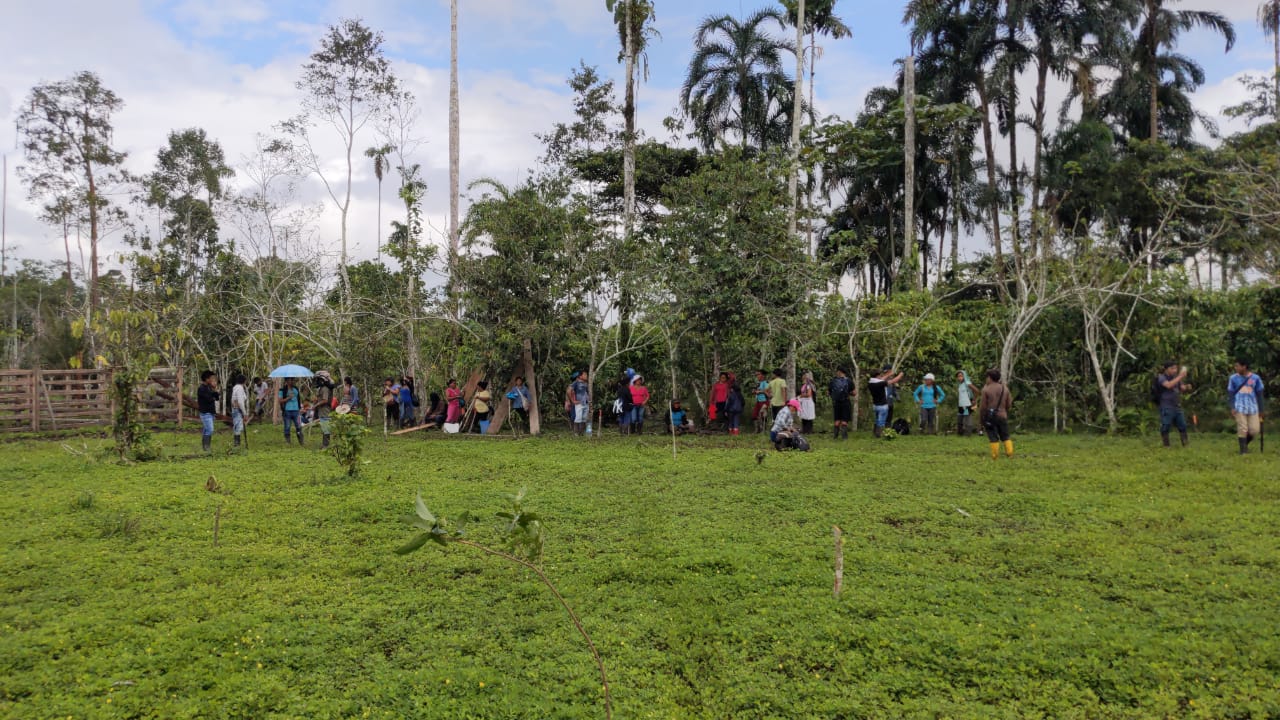
Reforestation day in Kokaya, Siekopai territory. Photo: Hernán Piaguaje.
Pëkëya – Lagartococha: The systematic dispossession of the State
The second case is the territory of Pëkëya, better known as Lagartococha, located in the province of Orellana. The Siekopai Nation has petitioned the Ecuadorian State for the adjudication of this territory since 1995, from which they were displaced by the border war with Peru in 1941. The Ecuadorian Ministry of Defense (MDNE) used Siekopai territory, its trails, and the knowledge of the indigenous Nation for its defense tactics during the border conflict with Peru. However, when the Siekopai tried to return, they were not allowed, as it was considered a military security zone.
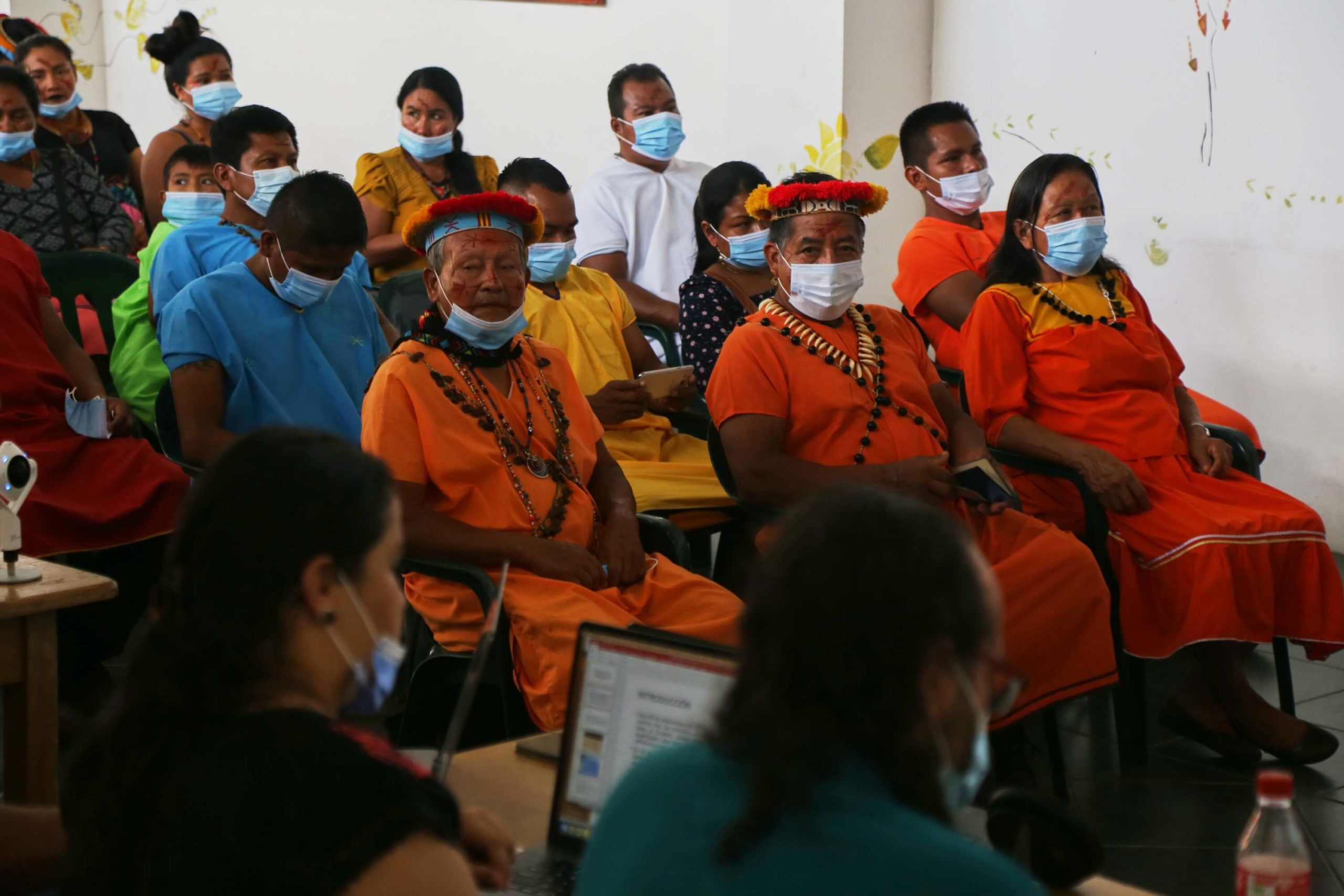
From the Federation of Women of Sucumbíos, the Siekopai Nation and the Amazon Frontlines team attended the hearing convened by the Ombudsman of Ecuador in October 2021. Photo: Ribaldo Piaguaje.
But that was not the only form of dispossession. In 1979, the Ecuadorian State declared this territory a “Cuyabeno Wildlife Protection Reserve” and, more recently, in 2008, established use and management agreements in 200,000 hectares of this territory with other Kichwa indigenous communities. All this without consulting the Siekopai Nation, to whom they only want to award 5000 hectares in a swampy area, also generating an interethnic conflict.
For these reasons, in 2019, the Siekopai Nation requested the Ombudsman of Ecuador (DPE) for a defense investigation against the Ministries of Environment and National Defense for the violation of their territorial rights. Two years later, in September 2021, the DPE convened a hearing in which several Siekopai elders gave testimony of when they lived in their territory and the abundance they perceived, in contrast to the precariousness they felt in their new places of residence. They also discussed their relationship with the spirits of the water and the forest. Pëkëya was the refuge of the Siekopai when the COVID19 pandemic reached them and took away the wisest elders of the Nation. Pëkëya was the source of their ancestral medicine, and with which they avoided, once again, succumbing to extinction.


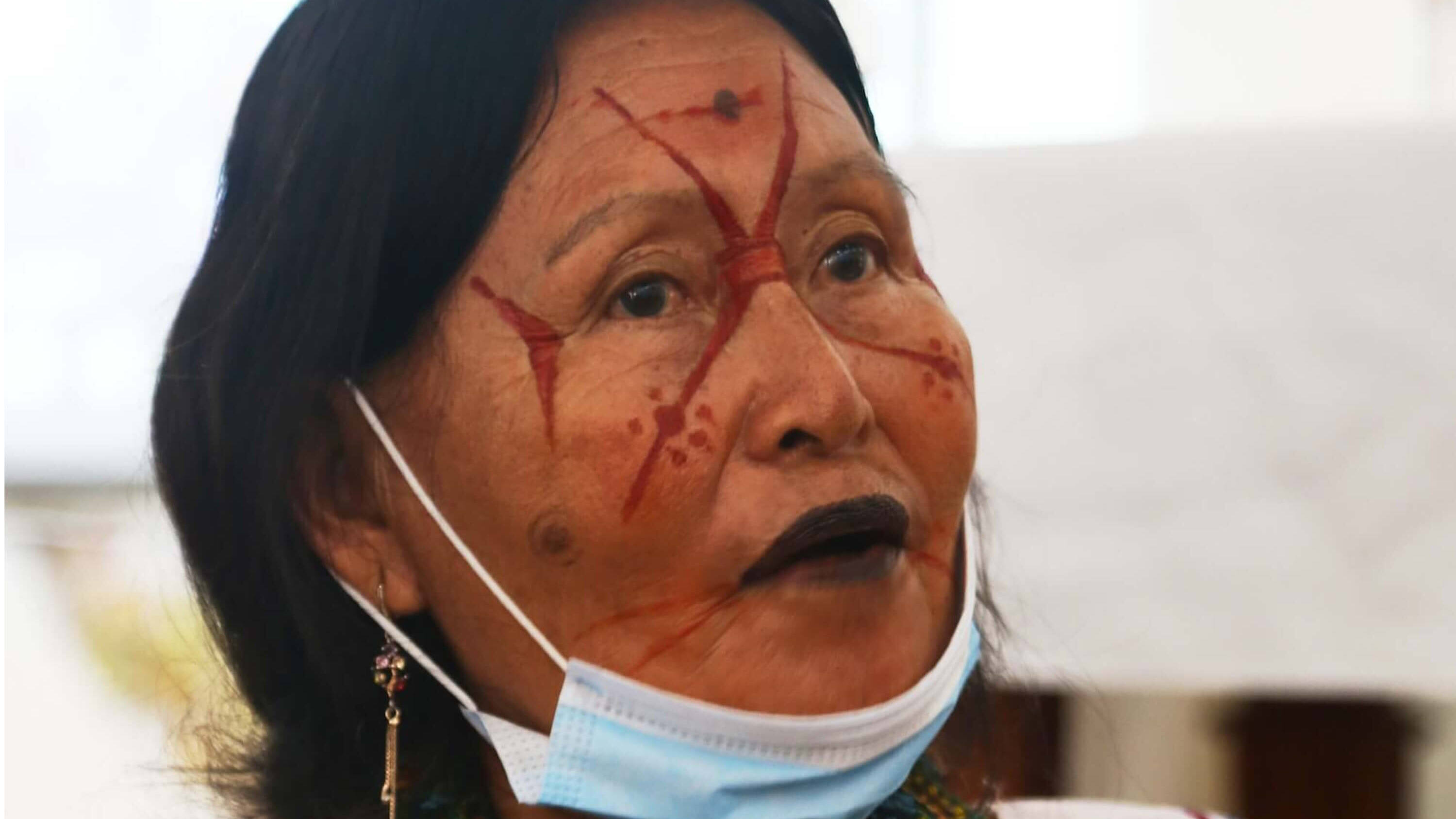
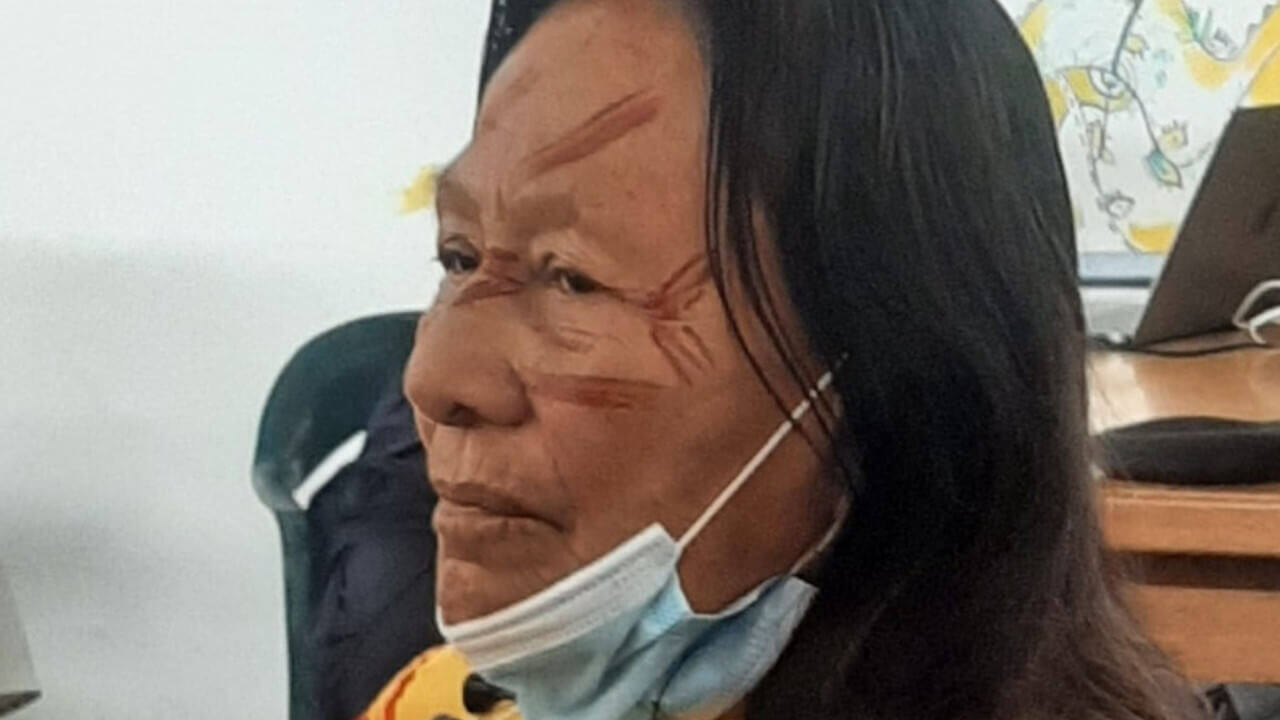
Wise ones and elders of the Siekopai Nation gave their testimony at the hearing before the Ombudsman’s Office of Ecuador. Photo: Ribaldo Piaguaje
To these testimonies were added the reports of experts in biology, anthropology, and law, supported by Amazon Frontlines, who presented evidence that showed that this territory belongs to the Siekopai Nation and that the State ministries have systematically violated the rights of the indigenous nationality.
On October 14, 2021, the Ombudsman issued its resolution in which it established the responsibility of the Ministry of the Environment and the Ministry of Defense for the violation of the rights of the Siekopai Nation and established reparation measures that must be complied with urgently. It also ordered the issuance of a property title over this territory, recognizing that the Siekopai Nation is its ancestral owner. The territory has not yet been recovered, but the resolution of the Ombudsman’s Office will allow the Siekopai Nation to sustain its fight for the recovery and reunification of the territory before the courts.
Wajoya: river of warriors
The Siekopai Nation is transboundary: the conflicts that occur in territories under the Ecuadorian flag are replicated in those under the Peruvian flag. In Ecuador, the protected areas, reserves, and protective forests systems have limited or impeded Indigenous Peoples’ rights of use, administration, and protection over their ancestral territories, violating the Constitution and international rights instruments. Therefore, they function as systems of dispossession and precariousness of their lives. In Peru, there is a similar system, and even worse, under the figure of Permanent Production Forest (PPF) and use-transfer contracts.
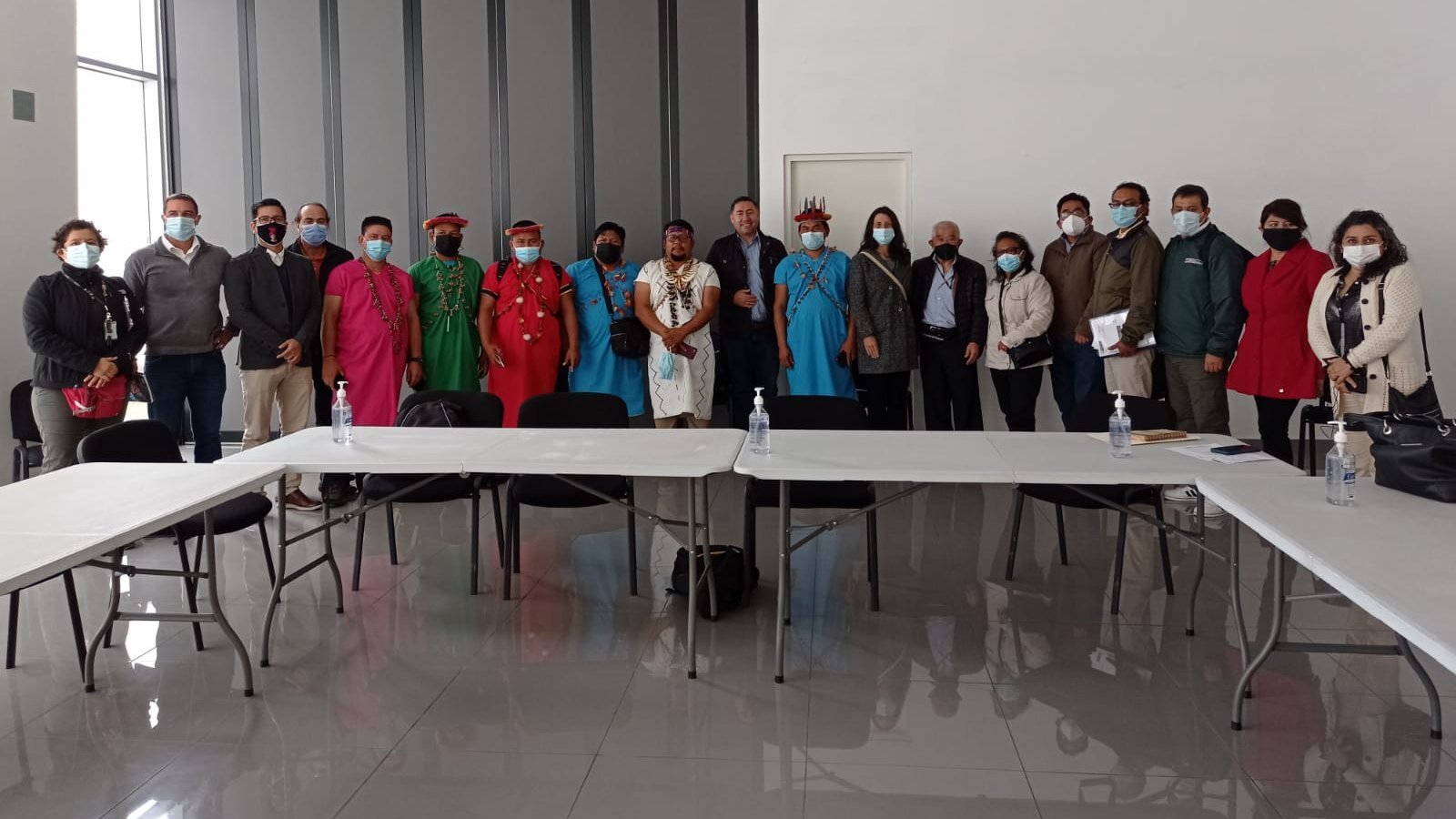
Meeting with officials from the National Forestry and Wildlife Service, the Directorate of Agro Loreto, and DIGESPACR to solve the problem of overlapping the Permanent Production Forest (PPF) on Secoya territory and other indigenous peoples of Peru.
The Secoya population in Peru is around 900 people who live in their ancestral territory located in the Loreto region, bordering Ecuador and Colombia. While the right to obtain and register the titles over their ancestral territories is recognized, the San Martín de Porres, Mashunta, and Vencedor Wajoya communities have not been able to register the property title even after years of insistence.The factor complicating registration is that the Peruvian State instituted the Loreto PPF within Secoya territory unilaterally and without consultation. In this way, it declares these spaces as property of the State, makes ancestral property invisible, and violates the rights of the nationality. Another regulation that affects and violates the rights of the Secoya communities is the one that establishes that ownership of ancestral territories can only be recognized for land suitable for agriculture or livestock, but not for forests. However, the vast majority of the ancestral territories of the Secoyas are forests. For their use, legislation subjects the communities to conditions and limitations that violate their territorial rights. For this reason, this ruling has been described as discriminatory because it is based exclusively on agricultural criteria and disrespects the worldview of the Indigenous Peoples.
In 2021, the Secoya Nation of Peru carried out two critical actions to demand respect and guarantee its territorial rights. In October 2021, authorities of the Nation made a trip of more than three days by river and plane from the Peruvian Amazon to Lima to talk with the Ministers of Agrarian Development and Culture, as well as with the corresponding state agencies, and demand urgent solutions to the registration of their titles. They succeeded in obtaining the personal commitment of the Heads of these Ministries of State to resolve this grave situation.
And on December 16, 2021, the Secoya communities, with the support of the Legal Defense Institute, IDL, Alianza Ceibo, and Amazon Frontlines, filed a request for defense in the city of El Estrecho, in Loreto, against the titling system ancestral territories in Peru for being unconstitutional and violating the territorial rights of the Secoya Nation and the Indigenous Peoples and requesting that the property titles that are delivered include all the ancestral territory.
“For us, the Amazon is not just a forest, but a historic and sacred place. Our grandparents fought a lot for that territory. That’s why it’s called Wajoya, River of Warriors. We demand that the integrity of the territory be recognized,” said Roldan Yapedatsa Ankutere, Apu of the Wajoya community, during the press conference for the declaration of the lawsuit that seeks to protect more than 120 thousand hectares of forest in the Peruvian Amazon and that could benefit other Indigenous peoples of Peru to guarantee their rights.
However, the Judge who initially heard the lawsuit declared it inadmissible, a ruling that has been appealed before the Superior Judges in the city of Iquitos, Loreto region, who have already taken cognizance of the case. However, this first response showed that the ignorance of the rights of indigenous peoples reaches even justice operators.
The fight continues…
Kokaya, Pëkëya, and Wajoya are the three visible fronts of the Siekopai Nation’s struggle for the recovery of its territory, and although there is still a long way to go with legal battles and collective actions, 2021 represented a harvest time of decades of struggle that have been woven and worked with great perseverance. It results from a gigantic exercise in resilience in the face of the dispossession and death of their wise ones during the pandemic. It has been important advances significant victories in the great battle to recover the territory and survive the cultural and physical extermination, and that it still has a long future.




